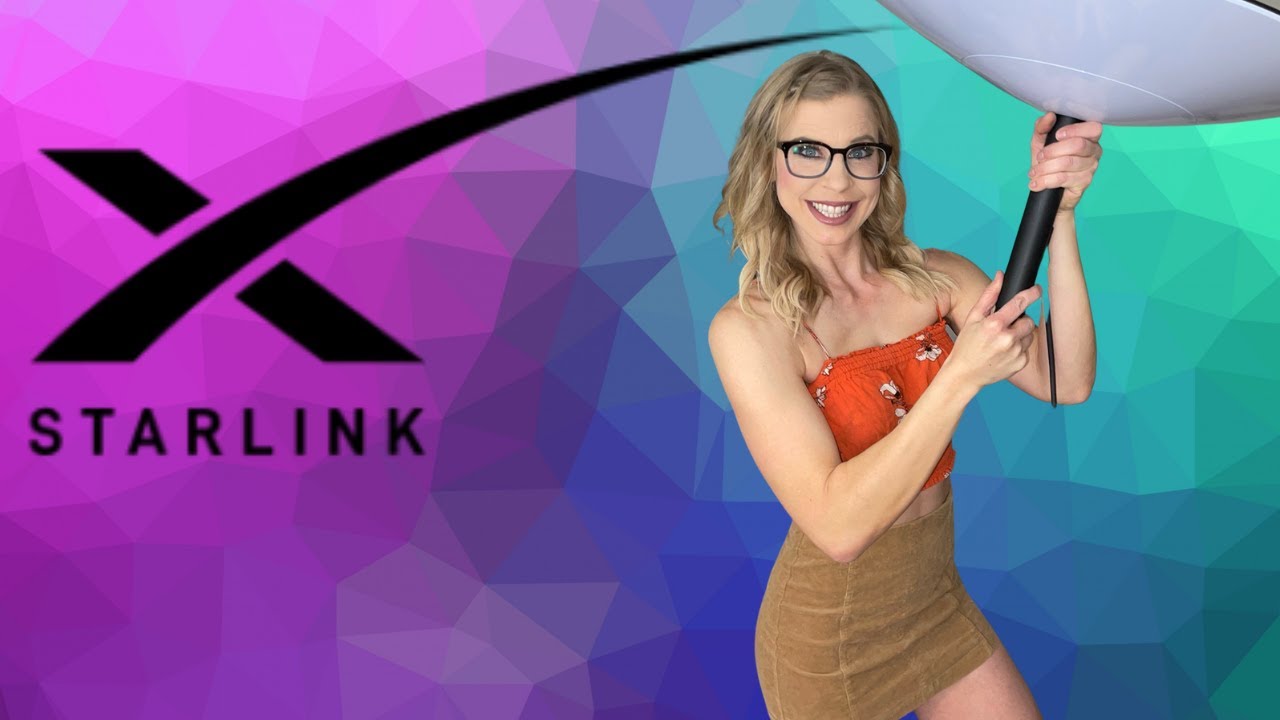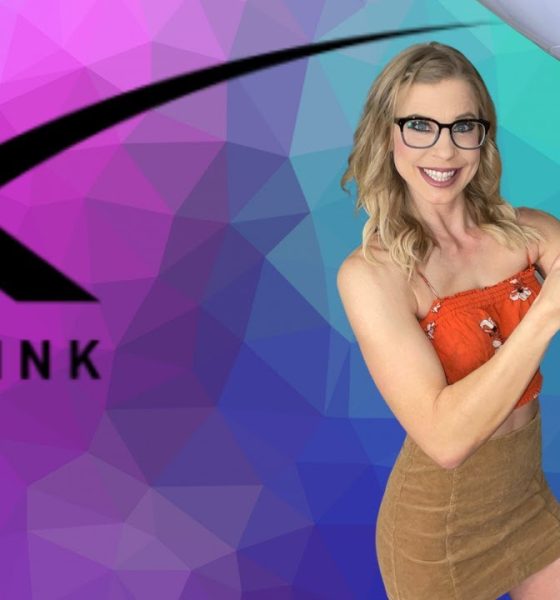Ellie In Space is more than a YouTube channel dedicated to SpaceX and space in general. The host, Ellie, has a unique story of her own. In the video (at the end of the article), we interviewed one another and shared our stories.
This article is a short recap of my interview with Ellie.
From TV to Ellie In Space
Eliana (Ellie) Sheriff has a very interesting story. Her background is in media and broadcasting. She moved to Utah for a job that she later left to pursue her passions for space and TV.
Ellie worked as a TV news anchor and reporter for over eight years and is now applying those skills to full-time, independent space reporting. She, as I am, is inspired by Elon Musk I asked her about her story.
Ellie left her job as a TV station news anchor to pursue independent space reporting.
Elon Musk has often talked about how negative the media has become of late. He even brought it up during my own interview with him last month. His words may seem harsh to some but they also ring true for those having to face the negativity day in and day out.
Ellie was one of those people.
“I had been debating leaving for a couple of years due to various reasons. One of the biggest ones being the pay is not that great. And then, other things started to drain on me such as news is quite depressing.”
“Most weeks, it would be like, ‘okay go cover that shooting that just happened and go interview victims or a family of the victim. Or, go cover this fire.’ You know, just stuff that wasn’t pleasant and that’s part of the job description.”
Ellie had another outlet for her creativity. She’d already started her YouTube channel which was already growing. Ellie asked herself ‘why don’t I just do what I’m doing now for a TV news station but instead, do it for my own brand and cover something that’s exciting and inspiring?’
Her channel had already started paying her rent for a year so it made sense for her to quit a depressing job and go full-time with Ellie in Space.
Why SpaceX and Elon?
Like me before I started writing full-time for CleanTechnica and then Teslarati, Ellie didn’t know much about Elon Musk, SpaceX, or Tesla.
“Like you, I didn’t know a lot about SpaceX and Tesla prior to covering it but that’s the thing. You learn about it. You interview people. And then you can be a source of information.”
From Airbnb to Starlink
Her former boyfriend encouraged her to start her YouTube channel and said that she’d be really good at it. She began sharing Airbnb vlogs and other things that weren’t getting much traction. But then, her former boyfriend received some good news from SpaceX.
He’d gotten approved to beta test Starlink. This was during a time when Starlink wasn’t accessible as it is now.
Ellie didn’t know what Starlink was, however, it wound up taking her on a journey that has opened her up to many adventures.
“He was like, ‘we should make a video and do some speed tests or whatever and see how it goes. And I made this video and it started doing really well. And I just thought that as any journalist has a beat, you know maybe they are covering crime news or maybe they’re covering health news. I was like, ‘why don’t I just make this my beat, and I’ll cover Starlink news?’”
You can watch our double interview in the video below. My interview with Ellie begins just after 22 minutes into the video.
Disclaimer: Johnna is long Tesla.
I’d love to hear from you! If you have any comments, concerns, or see a typo, you can email me at johnna@teslarati.com. You can also reach me on Twitter @JohnnaCrider1

Elon Musk
Elon Musk and Tesla AI Director share insights after empty driver seat Robotaxi rides
The executives’ unoccupied tests hint at the rapid progress of Tesla’s unsupervised Robotaxi efforts.

Tesla CEO Elon Musk and AI Director Ashok Elluswamy celebrated Christmas Eve by sharing personal experiences with Robotaxi vehicles that had no safety monitor or occupant in the driver’s seat. Musk described the system’s “perfect driving” around Austin, while Elluswamy posted video from the back seat, calling it “an amazing experience.”
The executives’ unoccupied tests hint at the rapid progress of Tesla’s unsupervised Robotaxi efforts.
Elon and Ashok’s firsthand Robotaxi insights
Prior to Musk and the Tesla AI Director’s posts, sightings of unmanned Teslas navigating public roads were widely shared on social media. One such vehicle was spotted in Austin, Texas, which Elon Musk acknowleged by stating that “Testing is underway with no occupants in the car.”
Based on his Christmas Eve post, Musk seemed to have tested an unmanned Tesla himself. “A Tesla with no safety monitor in the car and me sitting in the passenger seat took me all around Austin on Sunday with perfect driving,” Musk wrote in his post.
Elluswamy responded with a 2-minute video showing himself in the rear of an unmanned Tesla. The video featured the vehicle’s empty front seats, as well as its smooth handling through real-world traffic. He captioned his video with the words, “It’s an amazing experience!”
Towards Unsupervised operations
During an xAI Hackathon earlier this month, Elon Musk mentioned that Tesla owed be removing Safety Monitors from its Robotaxis in Austin in just three weeks. “Unsupervised is pretty much solved at this point. So there will be Tesla Robotaxis operating in Austin with no one in them. Not even anyone in the passenger seat in about three weeks,” he said. Musk echoed similar estimates at the 2025 Annual Shareholder Meeting and the Q3 2025 earnings call.
Considering the insights that were posted Musk and Elluswamy, it does appear that Tesla is working hard towards operating its Robotaxis with no safety monitors. This is quite impressive considering that the service was launched just earlier this year.
Elon Musk
Starlink passes 9 million active customers just weeks after hitting 8 million
The milestone highlights the accelerating growth of Starlink, which has now been adding over 20,000 new users per day.

SpaceX’s Starlink satellite internet service has continued its rapid global expansion, surpassing 9 million active customers just weeks after crossing the 8 million mark.
The milestone highlights the accelerating growth of Starlink, which has now been adding over 20,000 new users per day.
9 million customers
In a post on X, SpaceX stated that Starlink now serves over 9 million active users across 155 countries, territories, and markets. The company reached 8 million customers in early November, meaning it added roughly 1 million subscribers in under seven weeks, or about 21,275 new users on average per day.
“Starlink is connecting more than 9M active customers with high-speed internet across 155 countries, territories, and many other markets,” Starlink wrote in a post on its official X account. SpaceX President Gwynne Shotwell also celebrated the milestone on X. “A huge thank you to all of our customers and congrats to the Starlink team for such an incredible product,” she wrote.
That growth rate reflects both rising demand for broadband in underserved regions and Starlink’s expanding satellite constellation, which now includes more than 9,000 low-Earth-orbit satellites designed to deliver high-speed, low-latency internet worldwide.
Starlink’s momentum
Starlink’s momentum has been building up. SpaceX reported 4.6 million Starlink customers in December 2024, followed by 7 million by August 2025, and 8 million customers in November. Independent data also suggests Starlink usage is rising sharply, with Cloudflare reporting that global web traffic from Starlink users more than doubled in 2025, as noted in an Insider report.
Starlink’s momentum is increasingly tied to SpaceX’s broader financial outlook. Elon Musk has said the satellite network is “by far” the company’s largest revenue driver, and reports suggest SpaceX may be positioning itself for an initial public offering as soon as next year, with valuations estimated as high as $1.5 trillion. Musk has also suggested in the past that Starlink could have its own IPO in the future.
News
NVIDIA Director of Robotics: Tesla FSD v14 is the first AI to pass the “Physical Turing Test”
After testing FSD v14, Fan stated that his experience with FSD felt magical at first, but it soon started to feel like a routine.

NVIDIA Director of Robotics Jim Fan has praised Tesla’s Full Self-Driving (Supervised) v14 as the first AI to pass what he described as a “Physical Turing Test.”
After testing FSD v14, Fan stated that his experience with FSD felt magical at first, but it soon started to feel like a routine. And just like smartphones today, removing it now would “actively hurt.”
Jim Fan’s hands-on FSD v14 impressions
Fan, a leading researcher in embodied AI who is currently solving Physical AI at NVIDIA and spearheading the company’s Project GR00T initiative, noted that he actually was late to the Tesla game. He was, however, one of the first to try out FSD v14.
“I was very late to own a Tesla but among the earliest to try out FSD v14. It’s perhaps the first time I experience an AI that passes the Physical Turing Test: after a long day at work, you press a button, lay back, and couldn’t tell if a neural net or a human drove you home,” Fan wrote in a post on X.
Fan added: “Despite knowing exactly how robot learning works, I still find it magical watching the steering wheel turn by itself. First it feels surreal, next it becomes routine. Then, like the smartphone, taking it away actively hurts. This is how humanity gets rewired and glued to god-like technologies.”
The Physical Turing Test
The original Turing Test was conceived by Alan Turing in 1950, and it was aimed at determining if a machine could exhibit behavior that is equivalent to or indistinguishable from a human. By focusing on text-based conversations, the original Turing Test set a high bar for natural language processing and machine learning.
This test has been passed by today’s large language models. However, the capability to converse in a humanlike manner is a completely different challenge from performing real-world problem-solving or physical interactions. Thus, Fan introduced the Physical Turing Test, which challenges AI systems to demonstrate intelligence through physical actions.
Based on Fan’s comments, Tesla has demonstrated these intelligent physical actions with FSD v14. Elon Musk agreed with the NVIDIA executive, stating in a post on X that with FSD v14, “you can sense the sentience maturing.” Musk also praised Tesla AI, calling it the best “real-world AI” today.










